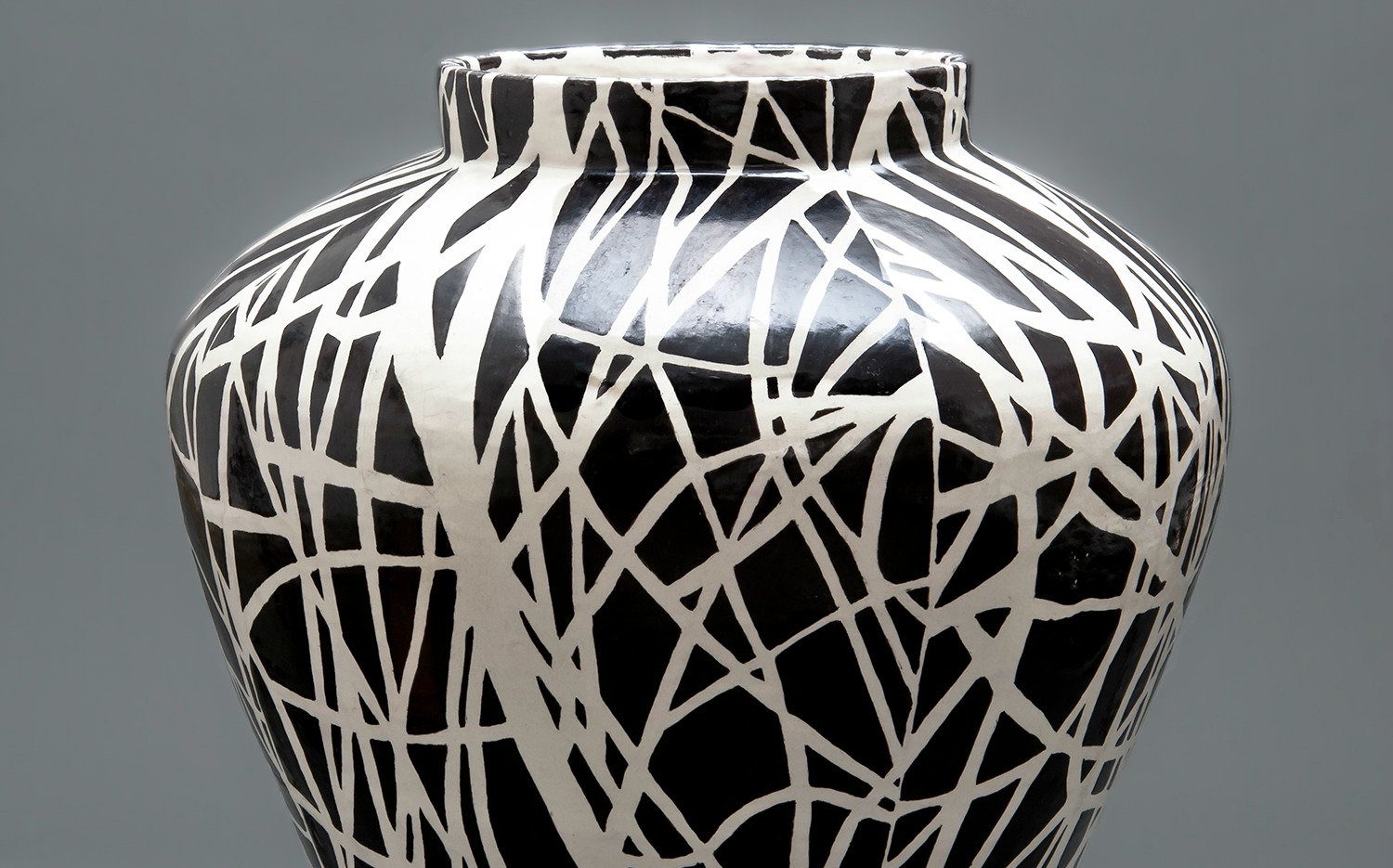Review: ‘Clay Between Two Seas” At The Crow Collection
ArtandSeek.net September 24, 2016 49‘Clay Between Two Seas’ is a world-premiere exhibition of Mexican clay pottery, the celebrated kind known as Talavera. The show traces the origins and styles of the ceramic art, and the show just opened at the Crow Museum of Asian Art. Whichled local All Things Considered host Justin Martin to sit down with Art & Seek’s Jerome Weeks to ask – why there?
Justin: Jerome, I think anyone who hears about ‘Clay Between Two Seas’ will wonder why a show about Mexican pottery is at the Crow Collection of Asian Art?
Of course. And my answer is going to be appropriately roundabout because this is a show about ceramic art. But it’s also about history, technology and trade routes. So we’ll start with this. What is this?
That’s the bottom of a planter.
So now what’s this?
Easy. That’s a coffee mug.

Right.
China? – I think I can see where this is going.
I’m looking at it, and it’s not really white, is it?
At any rate, the Moors – meaning, basically, the Muslims of North Africa – invaded Spain in 711 AD. And they brought all this ceramic technology and art with them. And Europe went nuts for it. That transcontinental trade and the European love for this pottery is a chief reason we, in English, even now, centuries later, still call all kinds of plates and dishes ‘our good china’ or even ‘bone china.’ “Bone china” just refers to the way it looks unglazed — there are no bones used in its manufacture. But both terms have become just generic labels for ‘high-class dinnerware.’
But because of this burgeoning demand, the Spanish developed their own factories — they even imported Dutch potters to teach them Italian Renaissance methods and styles. And naturally, when the Spanish conquistadores colonized the New World in the 16th century, they brought this pottery in their galleons with them.
And a perfect result of this trans-Atlantic trade is in the show. It’s a high-quality, tin-glazed earthenware vase from Mexico, the kind called Talavera — which, by the way, is officially known as Talavera Poblana, meaning it’s from the city of Puebla, which was a way of distinguishing it from the original potteries in Talavera de la Reina — in Spain.
But it looks Chinese – it looks like a Ming vase.
Justin: Like … little minarets.

That’s … globalization.
What do you mean?
how is the exhibition itself?
‘Clay Between Two Seas’ is about historic, international trade between continents, across oceans – so you have to walk from one room to another, even one floor to another – and you see these influences follow you along, down through the centuries, across countries. The exhibition does a very effective job at keeping you ‘positioned’ — knowing where this artwork is from, what influences it shows, etc.
I must confess that traditional Chinese ceramics and Mexican Baroque art are not strong personal preferences of mine. I’m enough of a modernist with spare, minimalist tastes to find the aesthetic of splendor-through-more-decoration often feels cluttered. So it was a pleasant surprise to come across a stunning, all-blue Chinese vase (below), and at the end to find to some truly striking examples of contemporary Mexican ceramic art (above).











